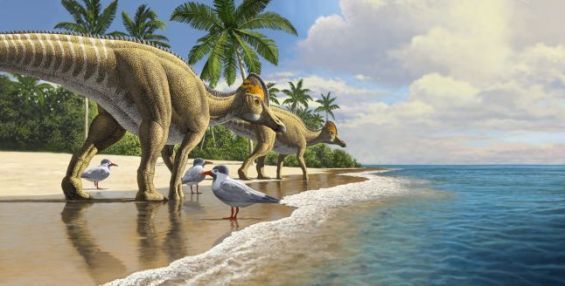Imagine smaller versions of the iconic Triceratops and duck-billed Hadrosaurus, roaming Africa during the dinosaur era's final chapter! This surprising discovery comes from new fossil finds in Morocco, adding a fascinating twist to our understanding of dinosaur evolution and distribution.
Dr. Nicholas Longrich, a paleontologist at the University of Bath, recently unearthed evidence suggesting dinosaurs thrived in Africa between 145 and 66 million years ago. His research, published in February, revealed two new «duck-billed» dinosaurs in central Morocco's Oulad Abdoun Basin: the Minqaria and larger unnamed species. These lived alongside another previously discovered «duck-billed» dinosaur called Ajnabia.

Previously, paleontologists believed these dinosaurs were exclusive to North America and Asia. The Moroccan discoveries suggest they crossed continents and diversified in Africa, possibly due to reduced competition. Interestingly, these African duck-billed dinosaurs were smaller than their counterparts elsewhere, perhaps due to sharing their habitat with giant Titanosaurs.
«These dinosaurs lived 66-67 million years ago, in the final million years of the Cretaceous period just before the dinosaurs went extinct», Dr. Longrich told Yabiladi, highlighting their significance. «They give us a glimpse into the final days of dinosaurs in Africa».
Morocco rewrites dinosaur era's final chapter
The diversity of these fossils suggests these creatures thrived and evolved before their sudden demise, according to Dr. Longrich. He points to other exciting Moroccan finds like Sauroniops, a giant predator rivaling the Carcharodontosaurus, and the presence of two T-Rex-sized predators coexisting around 100 million years ago.
«I don’t know anywhere else in the world where you see two giant predators at the same time», the Americal senior lecturer commented.

«This fauna is important because it suggests major extinction events in the middle Cretaceous», he explains, referring to the disappearance of large carnivores before the rise of abelisaurs like Chenanisaurus, known as the smaller version of a North-American T-Rex. «It’s important for understanding the middle of the cretaceous, a time period where we don’t get a lot of fossils».
Beyond the giant Spinosaurus, known as the world's first swimming dinosaur, Morocco's fossil record also reveals smaller plesiosaurs, similar to modern dolphins, inhabiting the ancient Kem Kem rivers alongside these dinosaurs. These diverse discoveries showcase how Morocco is rewriting our understanding of the dinosaur era's final chapter.




 chargement...
chargement...












